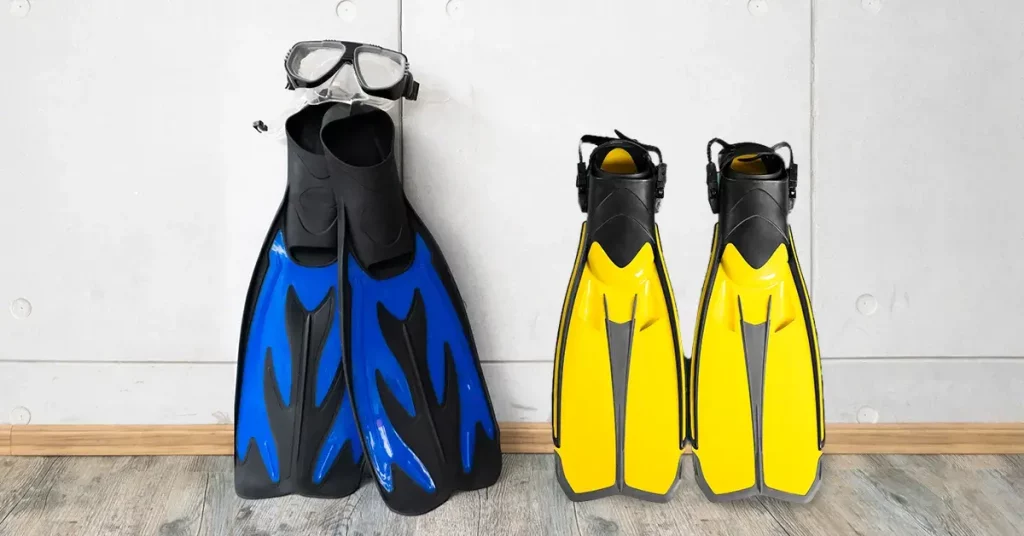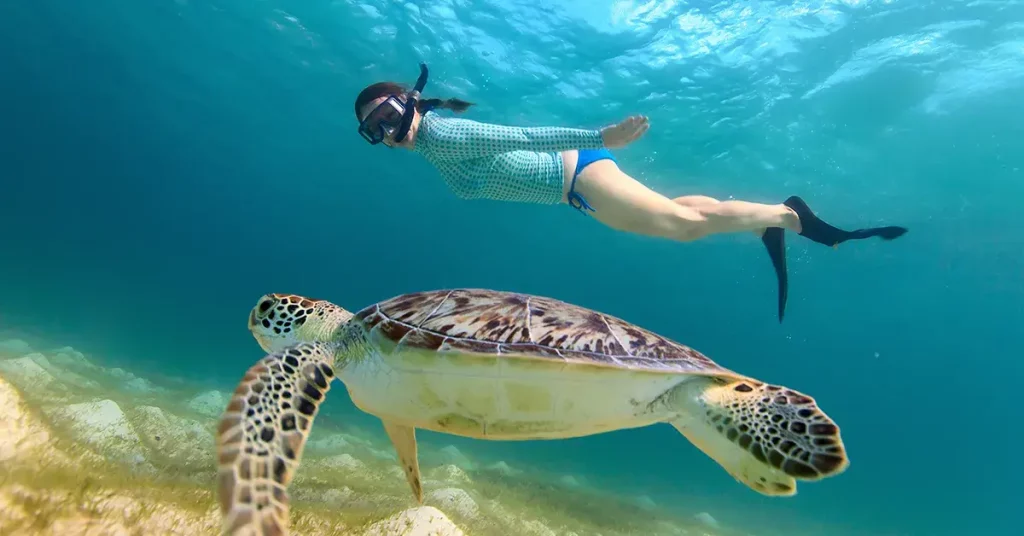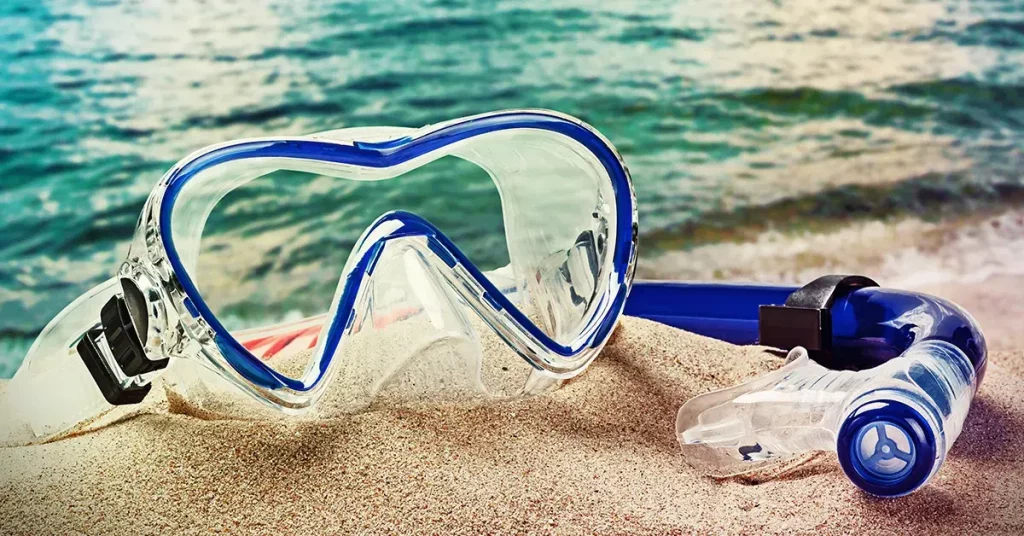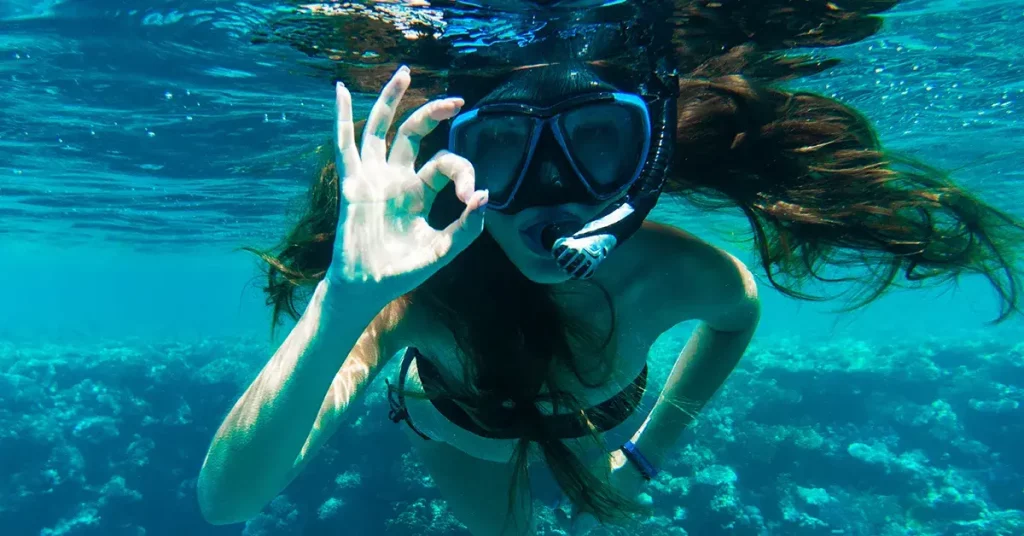When I first started scuba diving, I knew that fins were an essential part of the gear. But I didn’t realize that some fins are better suited to diving than snorkeling. With so many types, it is a challenge to know the difference between scuba fins vs. snorkeling fins. In today’s article, I’ll break down how to distinguish them to save you from floundering against your fins under the water.
Snorkeling Fins vs Diving Fins: Can I Use Either?
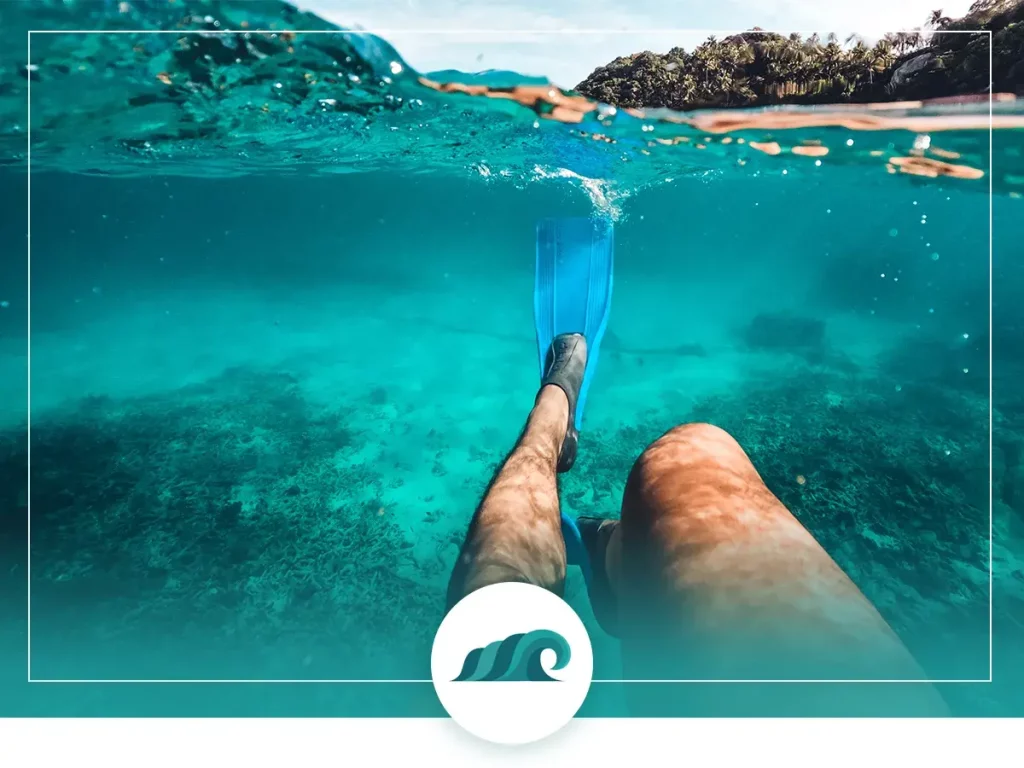
Before we talk about snorkeling fins vs scuba fins, let’s address the elephant in the room. You probably think a fin is just a fin, and they all serve the same purpose. You may even be wondering how to snorkel with diving fins. But are they interchangeable?
The answer is yes. Nothing is stopping you from wearing snorkeling fins for diving and vice versa. But the better question is if it’s wise to do so, which would be a resounding no. Snorkel fins lack features you need for scuba diving, and a dive fin has more features than you need to snorkel.
As you’ll see below, it’s best to purchase a fin that is suited for your intended activity.
Scuba Fins vs. Snorkeling Fins: 4 Differences
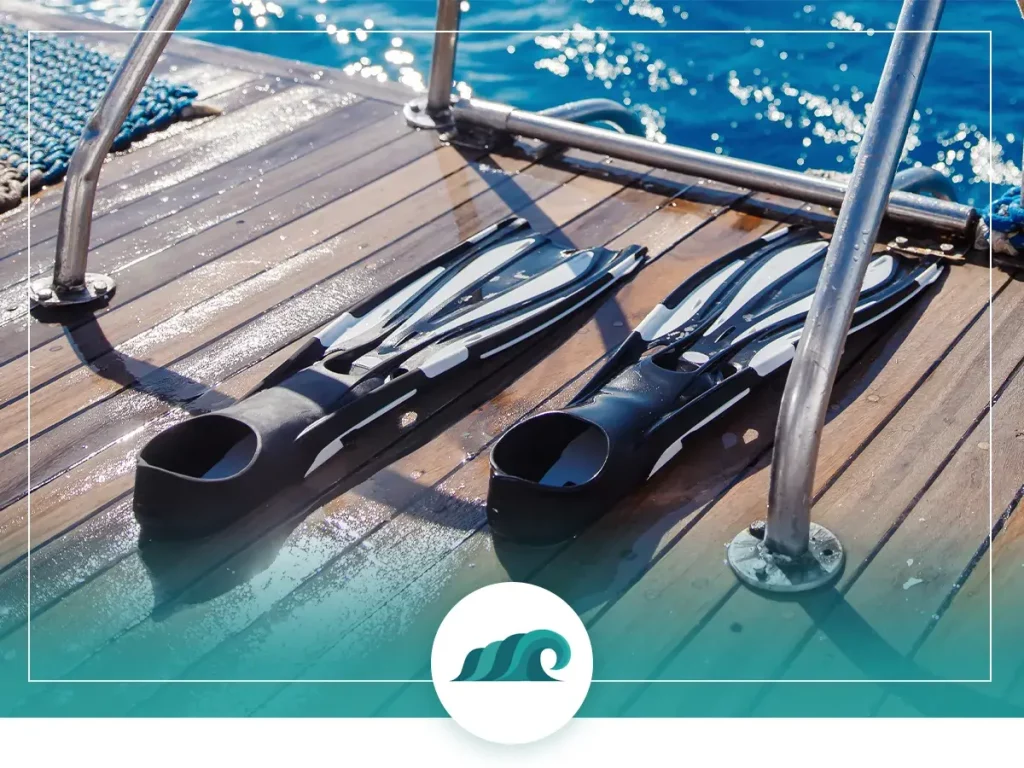
To help you understand why you should buy one or the other, let’s jump into the differences between snorkel vs. scuba fins.
Length
Length is an easy difference to observe. High-performance scuba fins are longer, about 25 to 30 inches long. The reason for this longer profile is that a scuba diver needs to generate more power, and longer fins are better for that. The longer a fin, the more water it moves each time you kick.
On the other hand, snorkeling fins typically come in around 20 to 25 inches or smaller. Snorkeling requires less power, so shorter blades are suitable for this activity. They allow a snorkeler to make small, flexible movements in the water. However, if you want to generate more thrust, you have to kick more.
Another difference between snorkeling and diving is that while snorkeling, you are much more likely to damage coral reefs with your fins. Snorkelers often forget that their fins add length to their body and kick reefs while swimming. A shorter snorkel fin helps prevent this issue.
Stiffness
Stiffness is a key factor in the difference between snorkeling vs diving fins. Scuba fins are much more rigid than snorkel fins. They’re made from heavy materials to make them stiff and durable. This feature is essential for divers, who have to move heavy dive equipment efficiently, often through strong currents. Scuba fins are also unlikely to bend or lose their shape, giving you greater thrust efficiency.
On the other hand, snorkeling fins are much more flexible. A flexible design makes it easier to cut across the surface of the water. Whereas wearing a rigid scuba fin for snorkeling will likely end up exhausting you.
However, keep in mind that flexibility in snorkeling fins differs. Consider your leg strength before purchasing a pair of fins. If you’ve got strong legs, flexible snorkeling fins may bend too easily and feel like they’re slowing you down. Instead, look for something more rigid to help you glide with power.
But if you have smaller legs, a flexible fin will help maximize thrust to your benefit. You won’t swim as quick or make as powerful movements as you would with more rigid fins, but you’ll probably enjoy the water more.
Heel Type
Heel type is another critical difference when it comes to snorkeling vs scuba fins. There are two kinds:
- Open heel fins: Open heel fins have no back. Instead, they clasp around the heel to accommodate dive boots.
- Full foot pocket: Full foot fins are worn without a dive boot and cover the whole foot, like a sneaker.
Scuba divers go into much deeper water than snorkelers, where they encounter much colder water. Diving boots are a necessity to keep your feet warmer while diving, but you need open heel fins for them to fit. For this reason, scuba divers will almost exclusively choose an open heel fin.
On the other hand, snorkelers typically stay on the surface of warm tropical water. If they do go underwater, it’s usually just to shallow depths. Because there’s no need for added warmth, full foot pockets are almost always the better option. You can forget about dive boots, plus the fins weigh less–who likes toting around heavy equipment anyway?
Blades
When scuba diving, you dive into deep water, which involves added water pressure. Fins must be able to accommodate the demands of this extra pressure.
Scuba fins have a few key features to help the diver better maneuver through the water. They’re stiffer and more durable, as mentioned above. But the blade is also different. Many models have integrated channels along the blade that help guide water. The integrated channels also allow you more control over your swimming angle and direction.
You can find three main blade types for scuba diving.
- Paddle blades with no channels. Some divers prefer not to have channels. The channels are stiff and add to that rigid design. You lose a bit of power, but your fins feel lighter.
- Paddle blades with channels. High-end scuba fins almost always have channels. Channels are an excellent way to help the diver move faster, and they add a bit of structure to the fin while you’re kicking.
- Split fins. The split fin design is just what it sounds like: the blade is divided into two parts. One side creates high pressure while the other creates low pressure. They were designed to mimic a whale’s tale and make swimming more efficient.
When it comes to snorkeling, channels are usually not necessary. Snorkel fins have a simple design that is sufficient for moving across the surface.
Final Thoughts: Scuba Fins vs Snorkeling Fins
Now you know that when it comes to scuba fins vs snorkeling fins, using the correct fins for your intended activity is critical. When in doubt, a dedicated dive shop is your best ally in finding the right diving and snorkeling fins.

